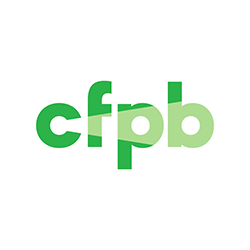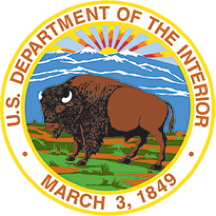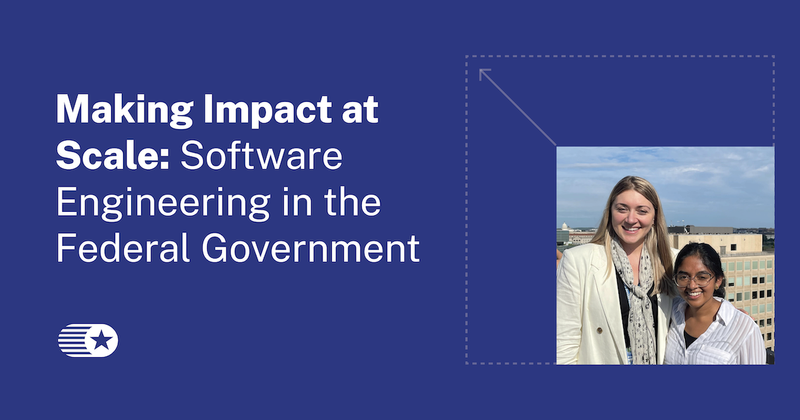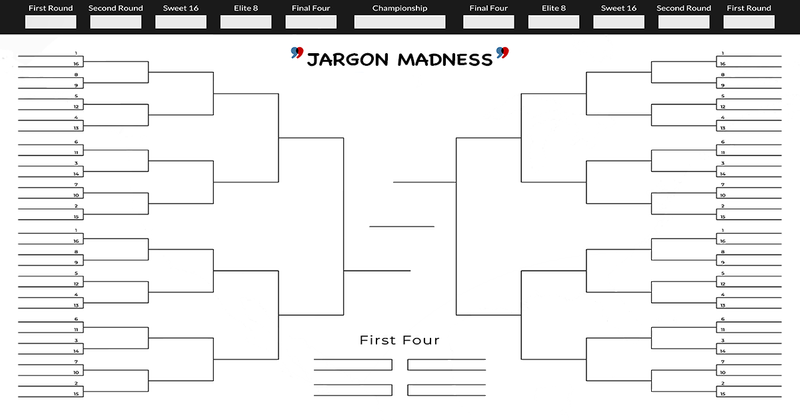Blogs
Government teams are improving digital experiences every day. Gain insights from their stories, case studies, and innovations.
Consumer Financial Protection Bureau (CFPB) Equity-Centered Design Guidelines
This guide contains initial steps for designers, researchers, and developers at the CFPB to help give the communities we design greater power and authority in the design and research process.— via Consumer Financial Protection Bureau

To Build Trust, Aim for Easy
Trust is earned through consistency and commitment. Build sites that build trust by considering user needs, respecting people’s time, and avoiding customer experience pitfalls.
Nearly 68 Million People Spoke a Language Other Than English at Home in 2019
The number of people in the United States who spoke a language other than English at home nearly tripled from 23.1 million (about 1 in 10) in 1980 to 67.8 million (almost 1 in 5) in 2019, according to a recent U.S. Census Bureau report.
18F Checks in With Jerome Lee and the eAPD Project
18F partnered with the Centers for Medicare and Medicaid Services (CMS) from December 2017 to June 2020 on the development of a product called eAPD — a user-friendly, modern product to streamline the creation, submission, review, and approval of the Advance Planning Documents that states use to request IT grant funding from CMS. We caught up with Jerome Lee of CMS, the product owner of eAPD.— via 18F

Making Impact at Scale: Software Engineering in the Federal Government
Engineering fellows with the U.S. Digital Corps share their paths to becoming software engineers and why they decide to use their skills to improve government services.
Accessibility Testing for onrr.gov
How do you make sure a website is accessible? This blog post outlines the four steps the Office of Natural Resources Revenue (ONRR - pronounced like "honor") at the U.S. Department of the Interior took to verify accessibility.— via Office of Natural Resources Revenue

Inclusive Design Patterns Research Report
The U.S. Web Design System (USWDS) is excited to provide a new library of guidance and examples focused on key digital interactions — what we call design patterns — that foster effective, inclusive, and equitable digital experiences. This online report has four pages; Summary, Findings, What’s Next, and Get Involved. It also links to the new patterns section, where you can learn how to help your users complete a complex form, identify and select a preferred language, or create a user profile.— via U.S. Web Design System

Implementing Equitable Data To Ensure Government Works for the Public
U.S. Digital Corps Fellow, Meredith Brown, reflects on her journey to civic tech and her impactful work supporting the White House Office of Science and Technology Policy.
Sunsetting Go.USA.gov: Final User Statistics
The digital landscape has changed significantly since we launched the Go.USA.gov service in 2009. Over the last two years the team looked carefully at the program holistically, taking into consideration the future of the program, the current landscape related to using shortened URLs and alignment with strategic business goals. In early 2022 we made the difficult decision to initiate steps to sunset the service.— via USA.gov

USAGov: Usability Test Reports
Improving Inclusion, Continuously: How We Iterated on Our Bot To Promote More Inclusive and Thoughtful Language
In 2015, TTS created a Slack bot to help us use more inclusive language. Over time, we found this bot could use some improvements. So starting in 2019, we began conducting research and iterating on our bot to further our goal of a welcoming, inclusive culture.— via 18F

The Privileged Identity Playbook Guides Management of Privileged User Accounts
The Privileged Identity Playbook is a practical guide to help federal agencies implement and manage a privileged user management function as part of an overall agency ICAM program.
Tips for communicating about your research with non-scientists
Using plain language to describe your work is not only important, it’s also part of the NIH mission and federal law. Here are some tips for telling the public about your research and why it matters.
Jargon Madness: A Plain Language Exercise
During the 2022 Plain Language Summit, Laura Rabuck of the Veterans Health Administration demonstrated how to promote plain language practices by focusing on jargon, a common enemy of all plain writers.
10X: A Home for Federal Innovators
10x funds ideas by federal employees on a wide range of topics related to government technology. This year, 10x is particularly interested in funding ideas that align with two themes: Digital Foundations, and Equity in Delivery. Are you the go-to person for ideas on your team? Are you the one who finds creative ways to solve problems? Do you see opportunities where others see challenges? Submit an idea—just 1 to 3 sentences—by November 30.— via General Services Administration

Putting People at the Center of Digital Government
USAGov and USAGov en Español are working to reimagine the way we provide government information and services to the public. The USAGov team is an example of how GSA’s Technology Transformation Services (TTS) is aligning and living up to the challenges outlined in the President’s Management Agenda. The focus in 2022 has been on centering the work around the people we serve.— via General Services Administration

Incorporating Evaluation into Digital Forms
The American public spends approximately 11.5 billion hours per year filling out federal government forms. Form complexity can result in lack of submission or completion, and errors on forms can cause processing delays and affect whether the form is accepted — which can have far-reaching consequences. Learn how Five GSA offices and the American public worked together to improve federal forms.— via General Services Administration

















